[ad_1]
Sponsored by Tourism Thailand
I love Asian food, especially Thai food, but when it comes to cooking it in my own home, I’m often left confused. Mostly by the ingredients.
If you’re planning a trip to Phuket, one of the most memorable experiences you can have it to take one of the best Thai cooking classes in Phuket.
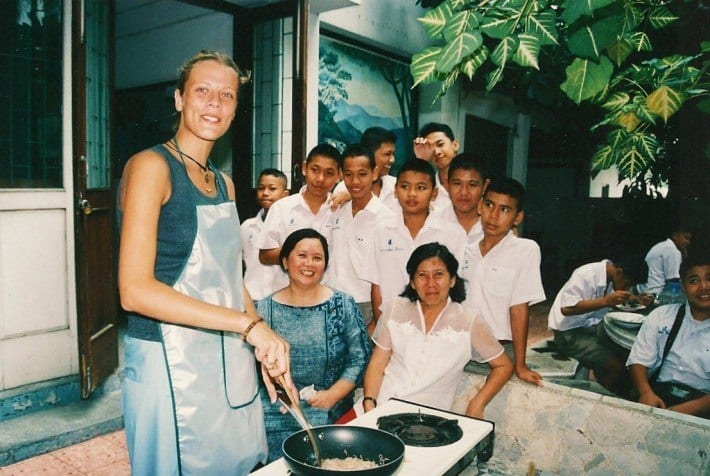
Not to mention you get to take home a new skill and can show off to your friends all the exotic cooking skills you’ve learned.
But choosing the right Phuket cooking class isn’t an easy task. There is so much to consider when choosing which cooking class in Phuket to take, from what you cook to the experience of the chef.
So if you’re feeling confused or wondering which cooking class to take, then here is a guide to the best cooking class in Phuket and our experience of taking this cooking class.
What to look for in a Thai Cooking Class in Phuket?
Before we get into the best Thai cooking schools in Phuket, lets quickly cover what you need to look for. Here are a few things to consider when choosing a cooking school:
Authenticity and Types of Dish
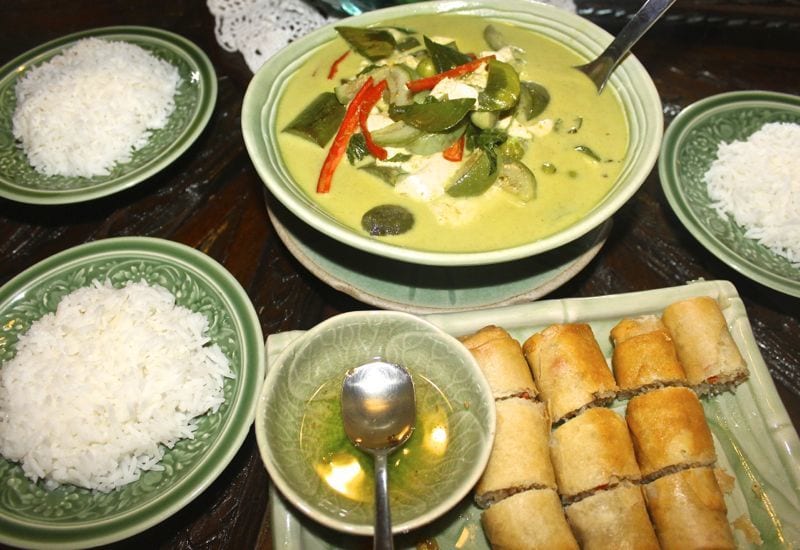
Look for a school that offers traditional Thai cooking techniques and uses local ingredients. Usually, the school will have a menu where you can select a few Thai dishes; usually one appetizer, one main and a dessert.
If it has Thai curries, you’re on to a winner because these are no ordinary curries. If it’s a simply fried rice, well, this is a Thai dish, but it’s something you can easily find a recipe for online at home.
Reputation
Check the school’s reviews online and ask for recommendations from your accommodation or other travelers who have attended the school.
You can browse Facebook groups, look on Internet forums, or ask an expat if you’re lucky to know any.
One of the best things about booking a cooking class through a third-party provider such as Get Your Guide or Viator is that you can read reviews from previous travelers and get an idea of the experience.
Class size
Consider the class size and make sure that it is small enough to allow for personalized attention from the instructor.
If there’s 20 in the room, the likelihood is the teacher won’t have time to help you much.
If there’s only a maximum of 6-8 people, then you can get a more personal experience.
Instructor experience
Find out about the instructor’s background and experience in Thai cooking, as well as their teaching style.
Most people offering Thai cooking classes in Phuket are not certified Thai cooks, michelin star chefs, or even have a cooking qualification.
But that doesn’t mean they are not good instructors. You could learn from a local mom who has learned to cook these dishes from recipes that have been handed down through generations.
A Thai cooking class is not about going home with award-winning dishes to serve in a restaurant, it’s about cooking home-cooked meals that you can prepare in your own kitchen.
If the instructor is a family-person, likelihood is the recipes they use have been in the family for a long time.
Course offerings
Make sure the school offers a variety of courses that cater to different levels of cooking ability and dietary restrictions.
If you are a complete novice, then make sure it has a beginner course available.
You might also want to learn about the ingredients and where they come from. In that case, look for a course that takes you on a local market tour where you can shop for ingredients first.
Facilities
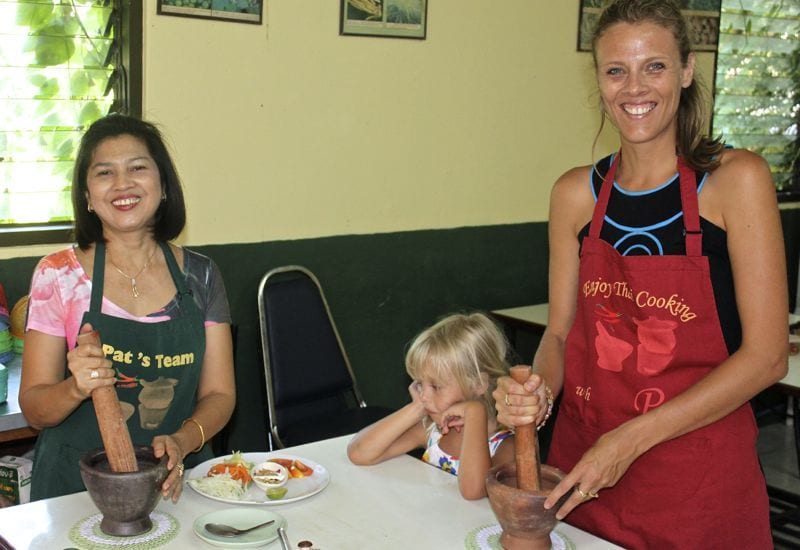
Check the facilities to ensure that they are clean and well-equipped with all necessary cooking equipment.
Some schools may be in someone’s house and are designed for one or two people. This doesn’t mean it’s a bad school, it could just be more intimate.
In most cases, all you need is a wok and an open fire to cook Thai dishes, but for soups you may need a bigger pot, for example.
You may need to read the reviews to assess whether the school has top-quality facilities in that case.
Location
Phuket is the largest island in Thailand and so it can take a while to get from A to B, especially if you are using Grab or taking public transport.
Consider the location of the school and whether it is easily accessible from your accommodation in Phuket.
You can also sometimes get a pickup from your accommodation included, but this is usually available for those staying in Patong Beach, Chalong, Karon Beach, or some of the other beaches.
If you’re staying in the Thalang district or Phuket Old Town, you may need to find your own transport.
Price
Most Thai cooking classes are a half day activity, or between 2-4 hours.
However the price includes the ingredients, the time of the cook, all the usage of equipment and possibly even transport.
The average price of a cooking class is between 1750 baht to 3000 baht, depending on the length of time and what’s included.
The Best Thai Cooking Classes in Phuket
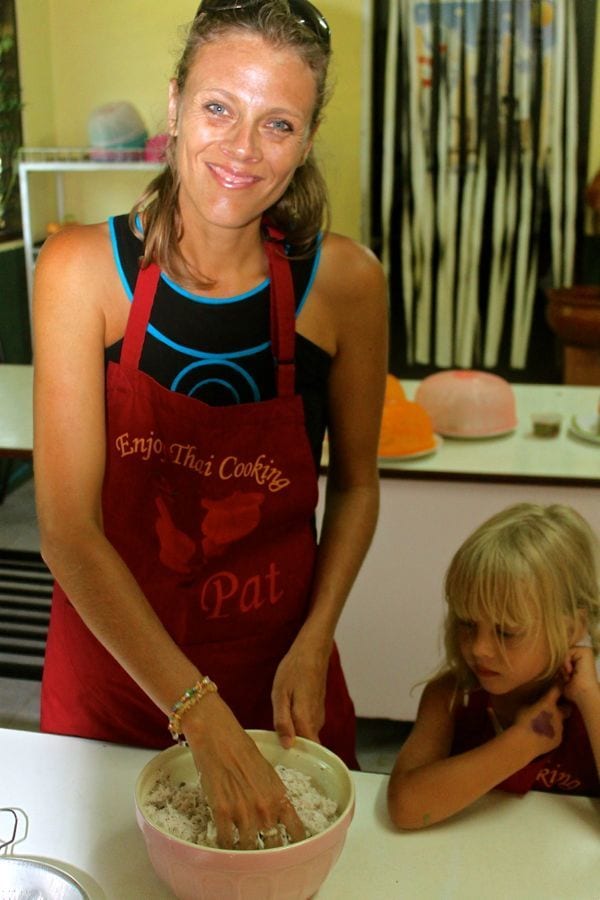
Now you know what to look for in a Thai cooking school, it’s time to show you the best Thai cooking classes from our experience and research.
1. Pat’s Home Thai Cooking
After a morning spent at a Thai cooking class in Phuket with Pat, I feel more confident in my ability to create a delicious Thai meal.
Pat is a local Thai chef who has no interest in having her own restaurant, she feels helping tourists learn how to cook Thai cuisine from her own home is far more enjoyable.
She spent 3 years perfecting the art of Thai cooking at the “Green Cafe” on the infamous Melrose Street in LA.
However, she says most of her learning came from growing up as a child in her family kitchen. It made me squirm to know I was not (yet) passing down any culinary magic to my children.
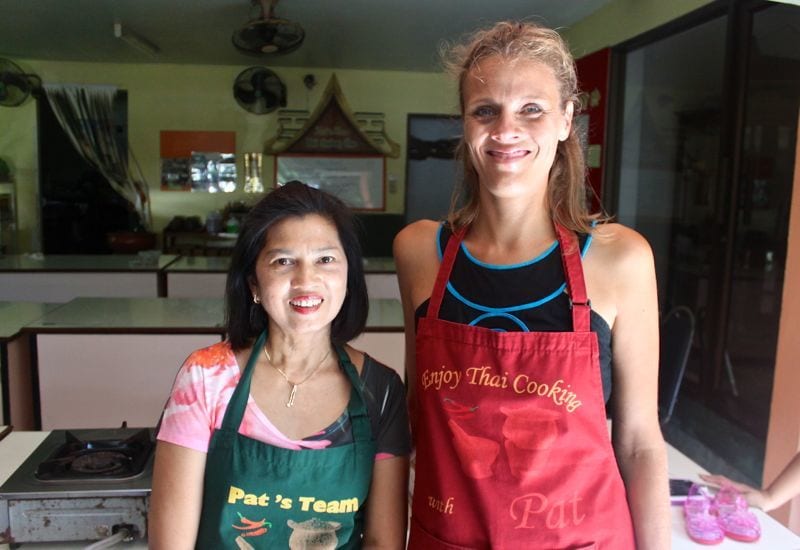
Pat has been teaching tourists how to cook Thai food for over 16 years, hers was the very first Thai cooking school in Phuket.
Newspaper and magazine articles lining the walls of her open kitchen tell the story of her success and appearances on international TV shows, including an Australian cooking show in 2012.
Our Experience Cooking with Pat
Our first stop was the local markets nearby Pat’s home in Phuket Town.
She quickly moved from stall to stall picking up the fresh fruit and vegetables explaining what they were and how they were used in Thai cooking.
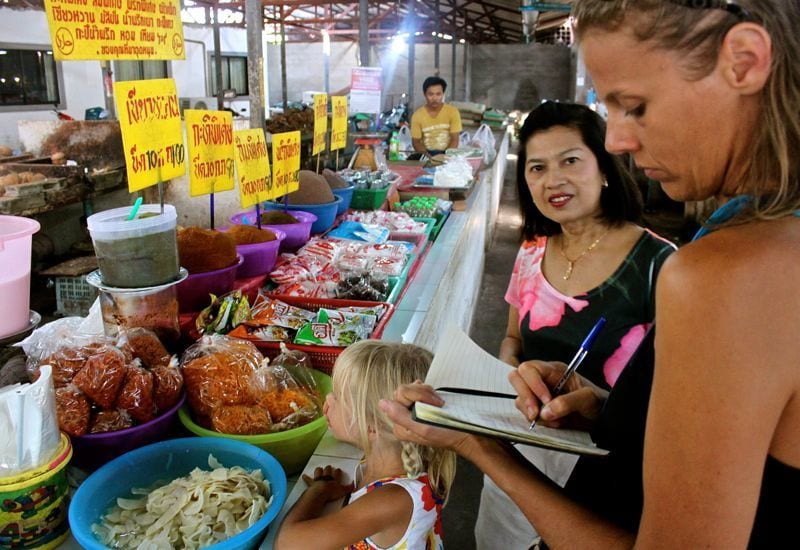

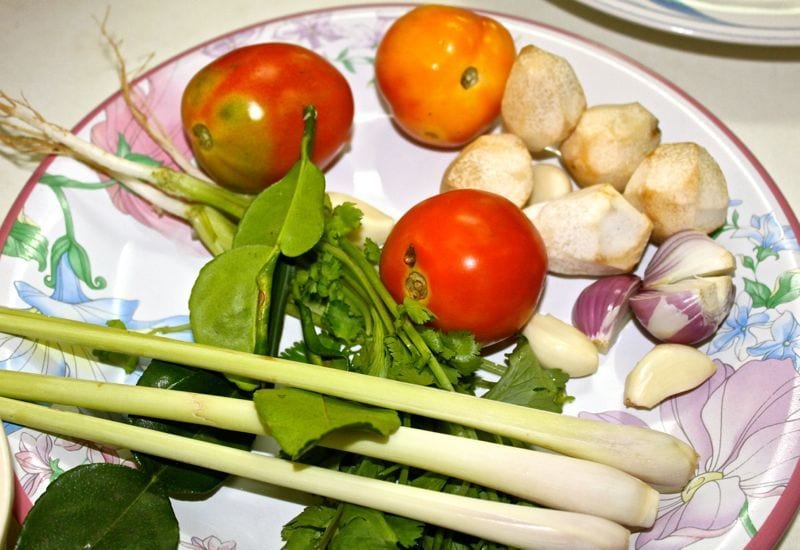
We hadn’t even started cooking yet and already I felt I had learned so much and was begging to unravel the mystery to cooking decent food at home.
Step 1 – Have a decent local market!
Maybe Kalyra would no longer complain about my cooking and would relish my Thai dishes as she had been doing the past week in Thailand.
Kalyra’s favourite shows on TV are Masterchef and My Kitchen Rules and she has always loved to help me cook. She followed Pat and I around the market.
“Let me smell” she grabbed a lemongrass stalk.
Mmmm smells good. With each new smell of kaffir lime, holy basil, coriander, and galangal I recognized of the ingredients that create the distinct aroma and taste of Thai food.
It is not as complicated as you think. When we pulled up at Pat’s home for the cooking stage of the morning, Kalyra jumped over the car seats
“Are you ready to cook together Mum?”
We sat under the shade at a table and chair in front of the kitchen sipping an iced lemongrass tea, while Pat prepared for our lesson.
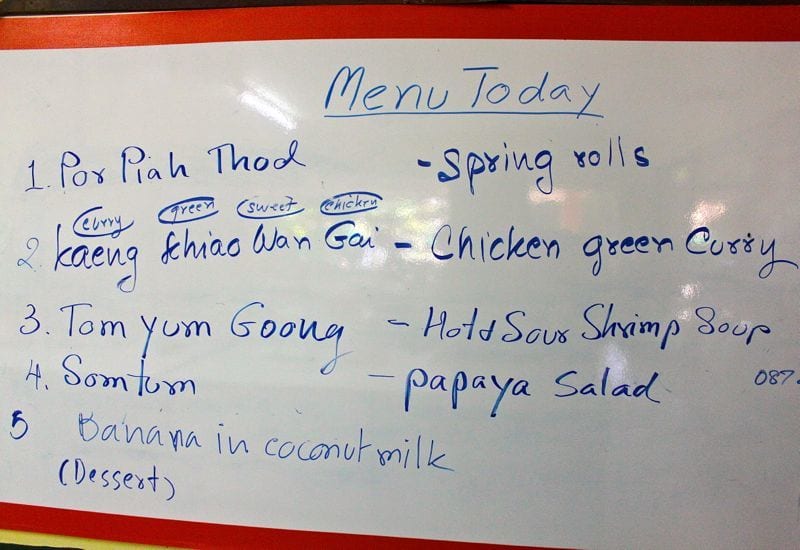
Pat doesn’t like to go over 8 students, preferring the more intimate style and ensuring she can give all her students adequate attention.
The open air kitchen is a double sized garage attached to the side of the house.
On two benches sit rows of woks and pots on gas burners and two rows behind that are cutting boards, knives and mortar and pestles. ready for food preparation.
The kitchen clean and sparse; the only things present are the tools and ingredients needed for our dishes.
Step 2: Have an organised kitchen
The white board at the back lists our menu for the day: spring rolls, green curry, Som tam, tom yum goong and bananas in coconut milk.
Some of my all time favourites.
You can also choose other popular favorites such as Pad Thai, Mango Sticky Rice and Papaya Salad, but I feel these dishes you can easily find a reciple online so I chose a curry.
You can also ask Pat for vegan options, and most of the time you can choose your meat such as chicken, beef, or seafood with prawns or shrimp.
Pat tries to tell us that Kalyra is too young for the cooking, but she is yet to understand my willful daughter. She dons the apron and sticks close to my side.
“Okay start class.” A short sharp clap gets us moving to the bench.
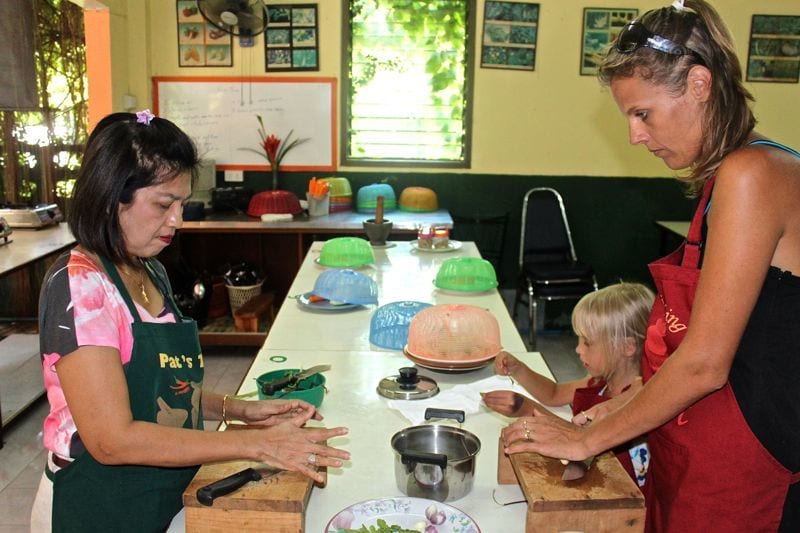
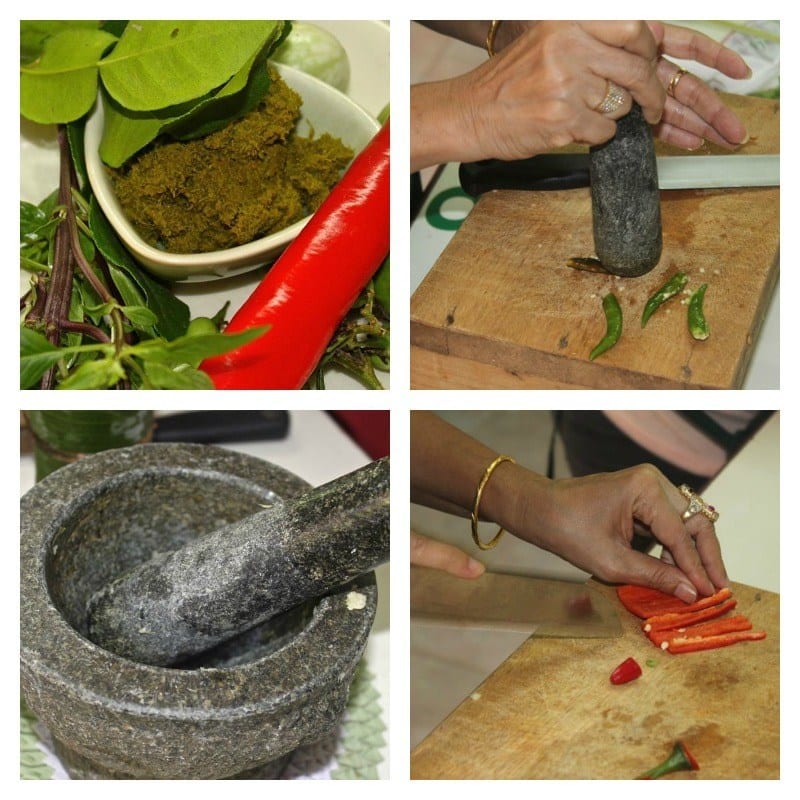
I relaxed into the wok knowing an expert was about to unlock the Thai cooking magic my family desperately craves.
We prepare first for the green curry. Pat explains the different ingredients we use and then we start chopping, slicing and bashing with the mortar and pestle.
It’s not long before the spices, herbs and flavors of the curry paste hit our noses and we are ready to move to the next dish.
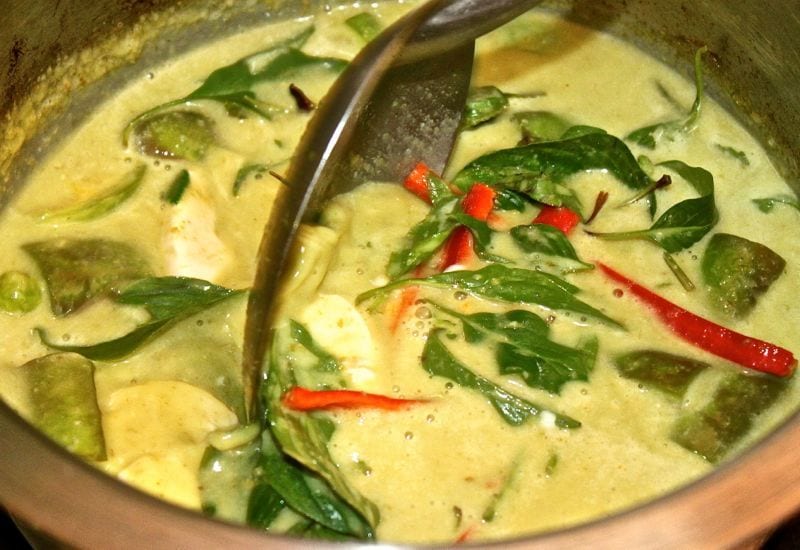
There are no quick fixes or packets of convenience in this kitchen; it is all done by hand from the beginning. Starting with coconut milk.
There is something so primal about squeezing the coconut meat with water to create milk.
It’s a long process, but I’m excited to know every element of the dish comes from a labour of love – isn’t that what gets the judges handing out tens on these cooking shows?
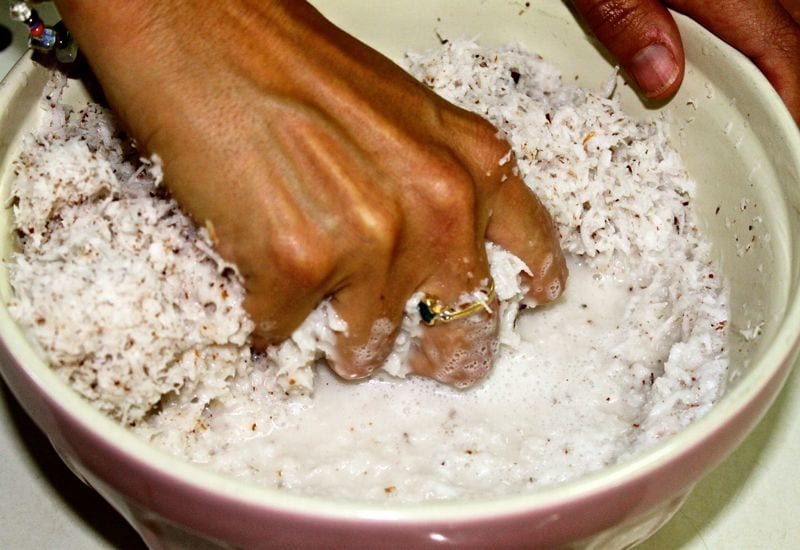
“You cooked with love and I could taste it. For that I give you a 10.”
I’m not sure I would say I was in love with squeezing coconut milk, it is kind of the long way about it, but I did love learning how coconut milk was made and actually doing it one time.
I am in love with coconut milk though.
“The coconut cream we use at the end for extra richness, not at the beginning otherwise the dish will get too oily. But, you can use a spoonful of the coconut cream instead of oil when your first begin to cook the curry paste.”
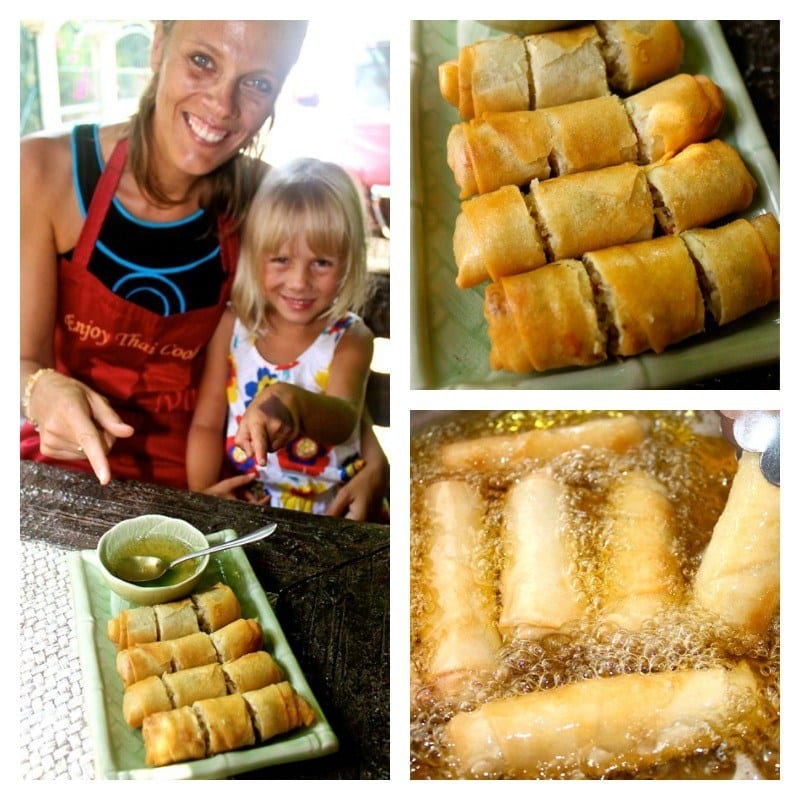
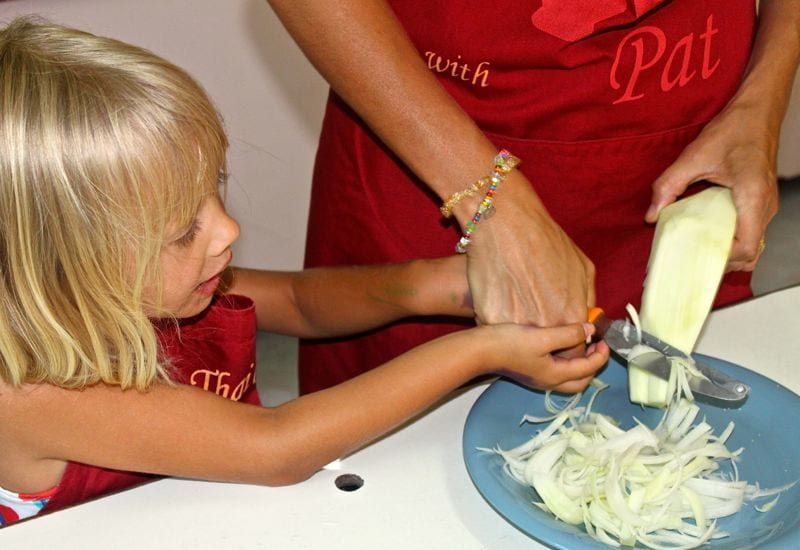
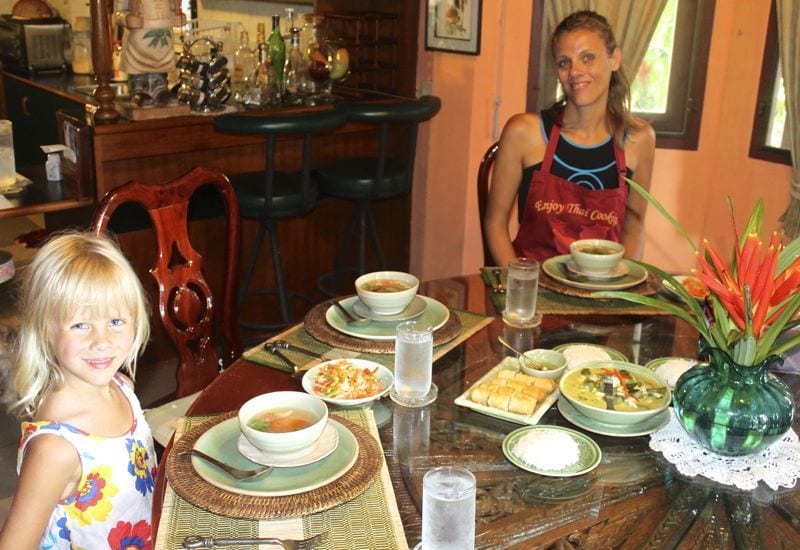
Maybe I am not a dreadful cook after all, as this is what I have always done, taught to me by my good friend Jintana who gave me cooking lessons in Bangkok in 2003.
I remember this tip and not much else. Kalyra embraces the rolling of the spring rolls, a task easy enough for her to do, although Pat wanted a little more tightness in the rolls and would stop to reroll a couple.
I didn’t care if the spring roll would fall apart frying in the oil, I was happy for Kalyra to be enthusiastically rolling and learning alongside her.
Kalyra wore a frown several times when there were tasks she could not do like chopping with the knife and stirring over the hot stove. But she helped me peel the kaffir leaf and grate the mango for the Som Tum.
And we both enjoyed the smells of sweet basil wafting up as we peeled and chopped. The creation of each dish is simple, with few ingredients and little cooking time.
Once you understand this, it is not challenging to create a 10 point Thai dish. Or maybe it’s just because Pat is standing there to guide me with each step.
After a couple of hours of chopping, grating, mashing and cooking, it is time to sit and eat. Pat has prepared the dishes on the table inside her home.
She busies herself with paper work while we sit and eat as a family. Well try to. Savannah has her exploration boots on, but Pat’s assistants play with her in between cleaning.
The food tastes good. Authentic. I savour every bite knowing the hard work that went into preparing it.
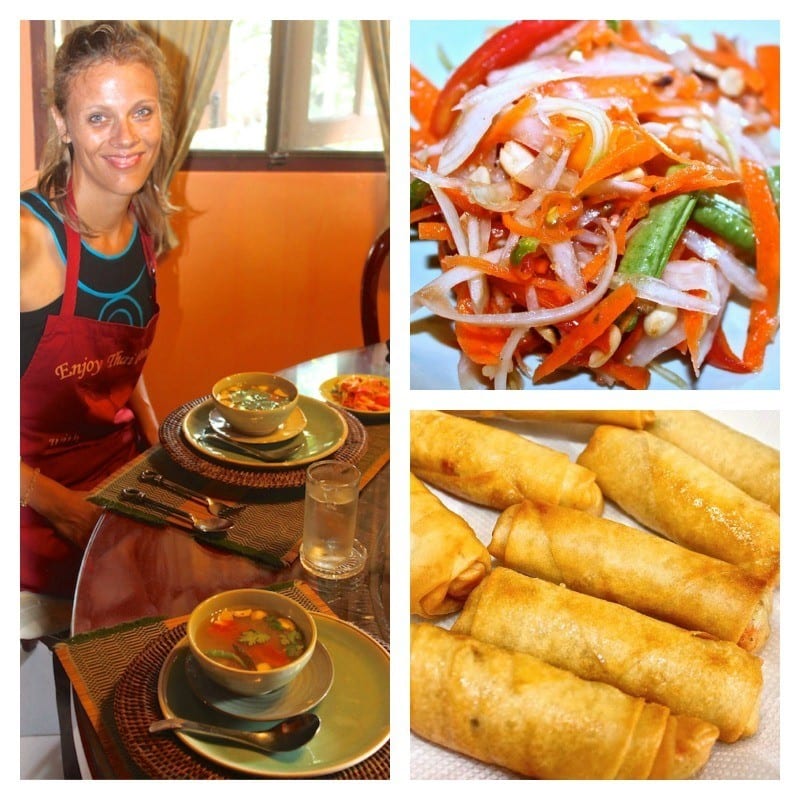
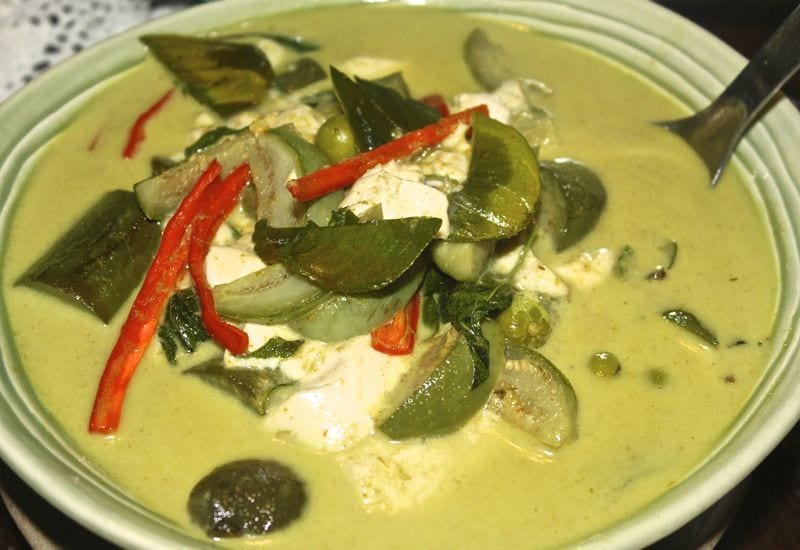
This was the food we came to Thailand for. My body zinged with each mouthful and the creaminess of the curry rolled around in my tummy and made me coconut happy.
Fresh from the source from market to belly, no tainted, packaged or processed food.
I knew what was put into my body was pure energy and was being put to good use, cleansing, restoring and revitalizing. I felt replete.
The banana in coconut milk added a touch of sweetness to end the meal. Just enough. Not the fullness of a western desert piled high with fat, sugar and calories, but light, healthy polish to the entire Thai meal.
To learn more about how you can join Pat in her home in Phuket for a traditional Thai cooking class visit her website.
Other Popular Phuket Cooking Classes
Disclaimer: We visited Phuket as guests of Tourism Thailand, but all thoughts, ideas and opinions in this guide are our own.
Thailand Travel Tips
Need more inspiration about your trip to Thailand? Here are some other useful guides…
In the comments section down below, tell me: Which Thai meal would you love to know how to cook?
[ad_2]
Source link
